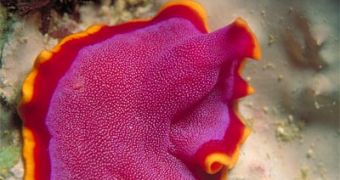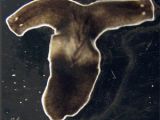In order to understand the basics of how sex cells develop, classic lab animals, like mice and fruit flies are of no use. That's why a team at the University of Illinois focused on simpler creatures: planarians, a type of flatworms, as ideal models for the study of germ cells that develop in eggs and sperm in the case of all sexual animals.
The researchers worked with Schmidtea mediterranea. These worms, when cut in two or more parts (lengthwise or crosswise) will regenerate a complete new individual from each part, with brains, guts and gonads. In fact, in nature, the worm can reproduce itself by fission, forming multiple clonings of itself: the animal simply breaks up itself. Even the brain can be removed and each part will regenerate completely; if the cut is not complete, monsters with two or more fore or hind parts will result.
Planarians are important for research as they display some common traits with mammals, that could explain how our germ cells are formed and maintained, linked to a gene, baptized nanos, known to be implied in germ cell development in other organisms, too. But while fruit flies and other invertebrates start the development of the germ cells early in the embryogenesis (embryo's development), planarians begin producing germ cells only days after hatching, a delayed development of the sex cells also found in mammals. This delay, called inductive specification, was found to be linked to the nanos.
Turning off nanos soon after hatching delayed the emergence and development of germ cells; in adults it made their ovaries and testes to solve; if this was made in planarians with removed sex organs, the new individuals could not regenerate sex cells. "This is the first time that nanos gene function has been studied in a non-traditional model organism," said cell and developmental biology professor Phillip Newmark, lead researcher.
"This is important because planarians, like mammals, seem to make their germ cells by an inductive mechanism. So we're hoping that we can use the molecular biological tools available for studying planarians to get at the mechanisms that tell a cell: 'You're going to be a germ cell.' "
The asexual individuals of Schmidtea also turned on nanos, generating germ cells; thus in the sex cells generation there must be also some other unknown mechanisms involved, impeding their transformation into mature testes and ovaries.
"Having a simple organism that also uses inductive signaling is going to help us tease apart the more conserved mechanisms (of germ cell development and maintenance). We hope that this information will also prove informative for understanding these processes in higher organisms." said Newmark.

 14 DAY TRIAL //
14 DAY TRIAL // 
